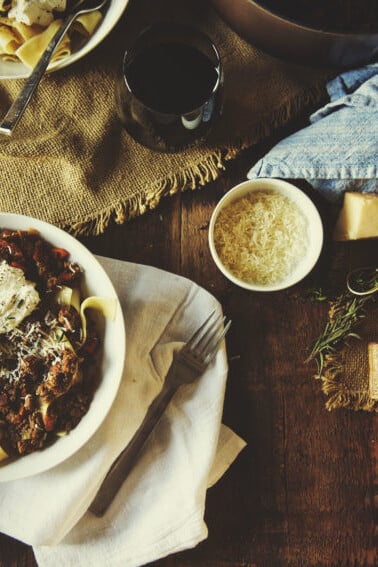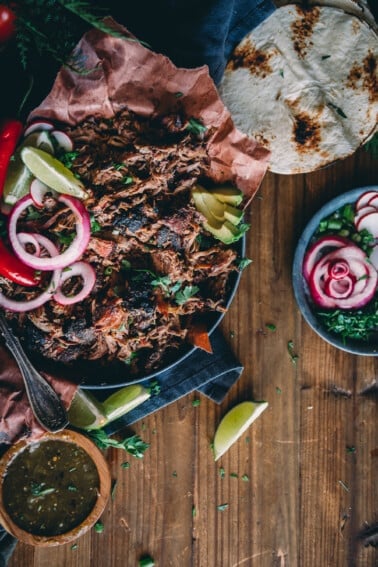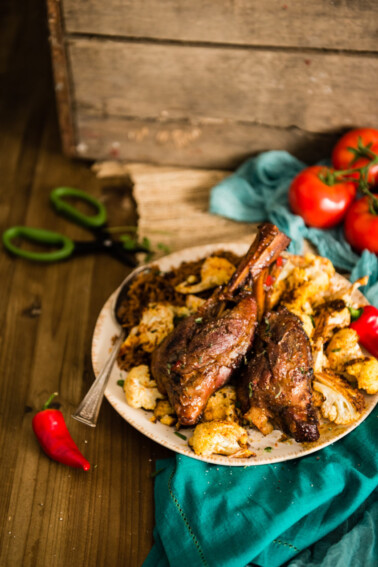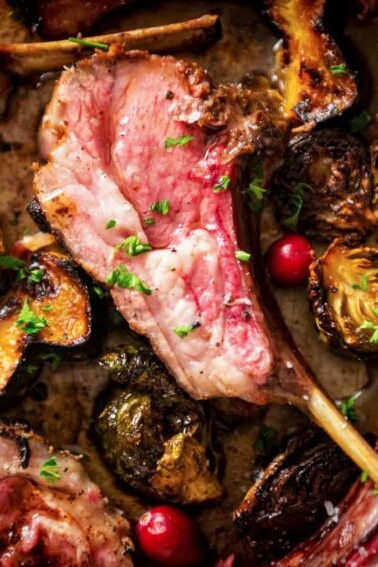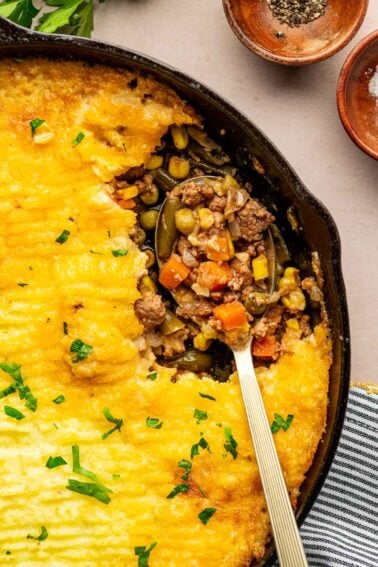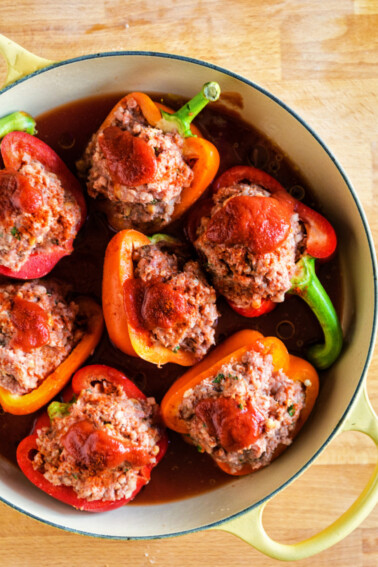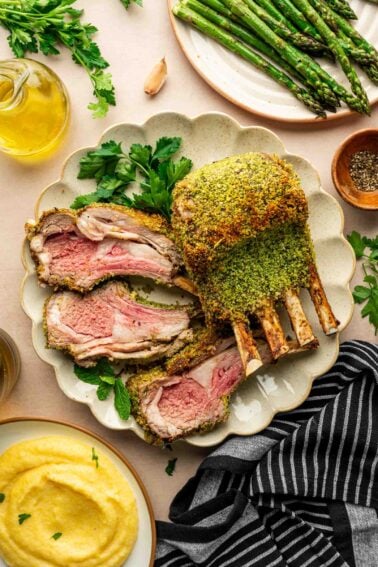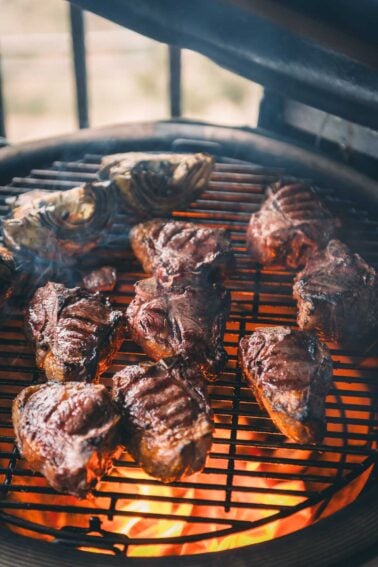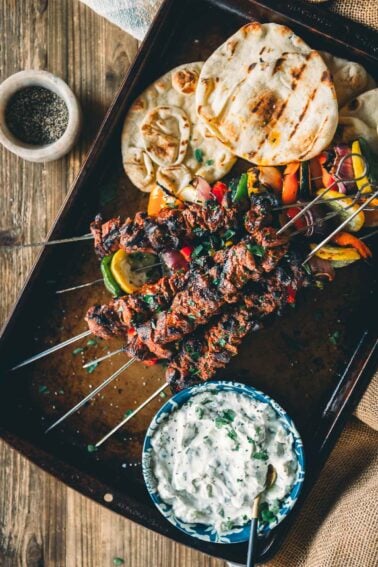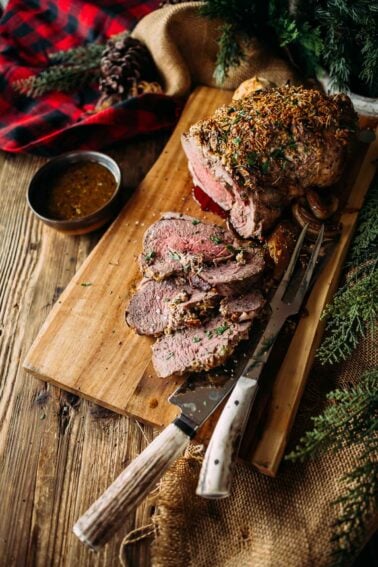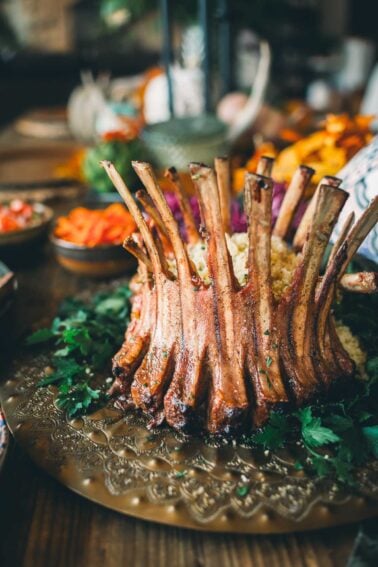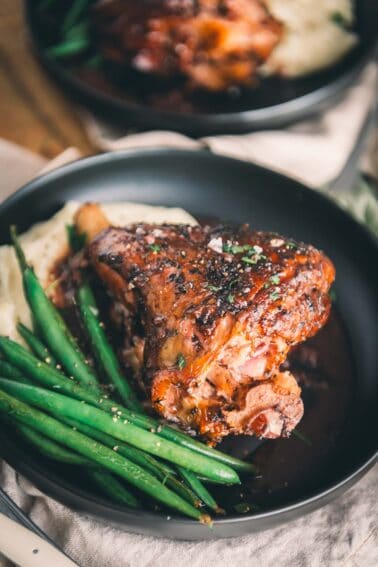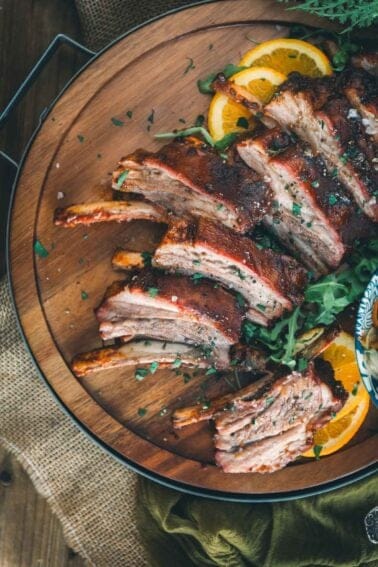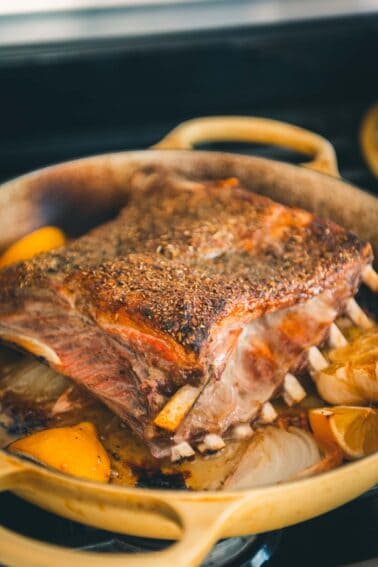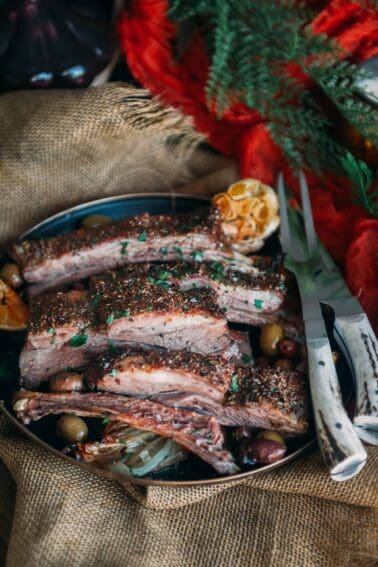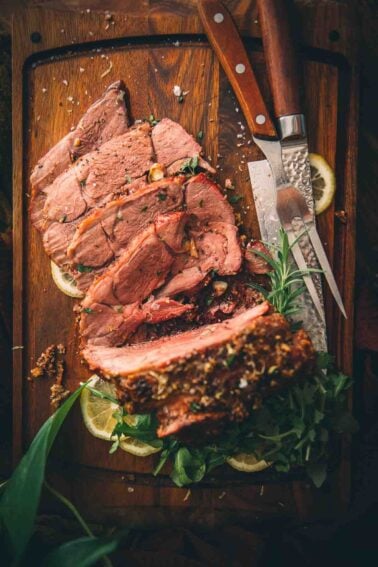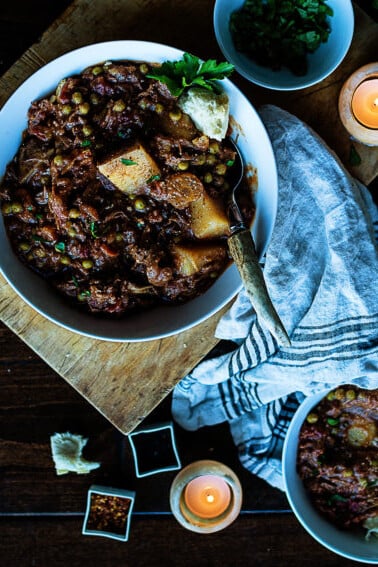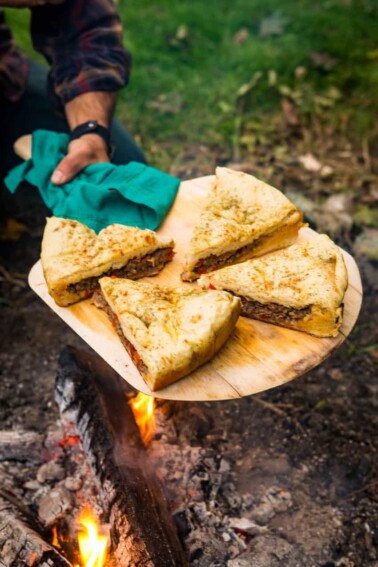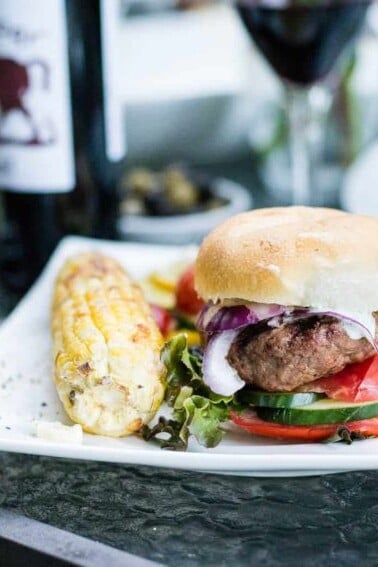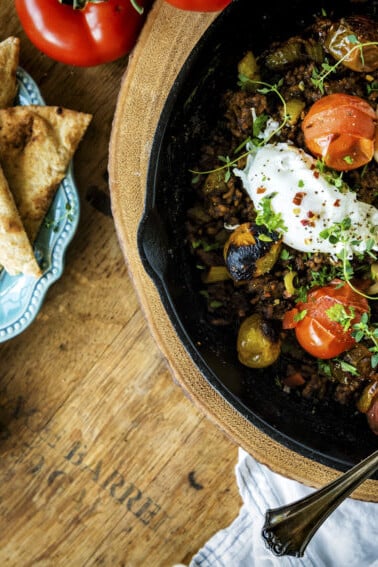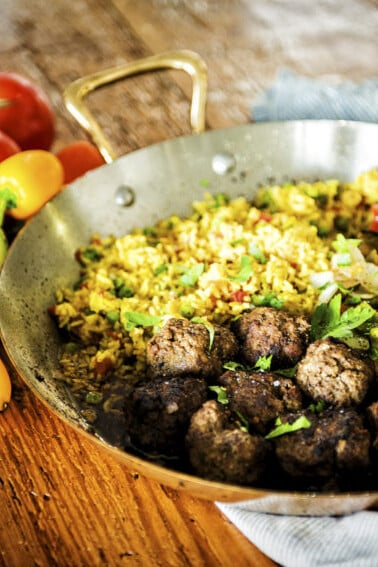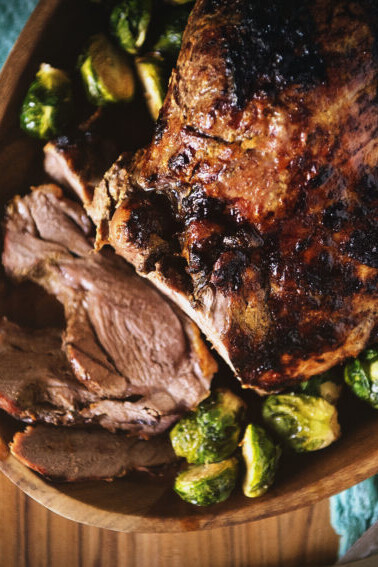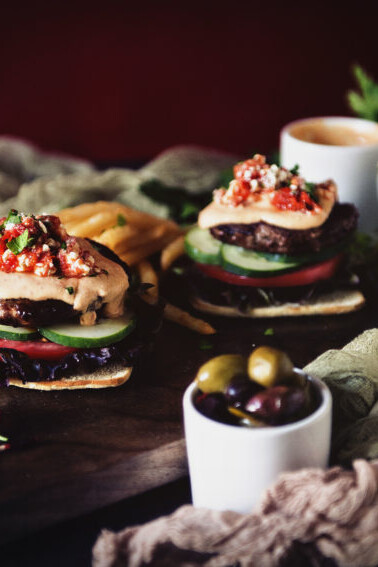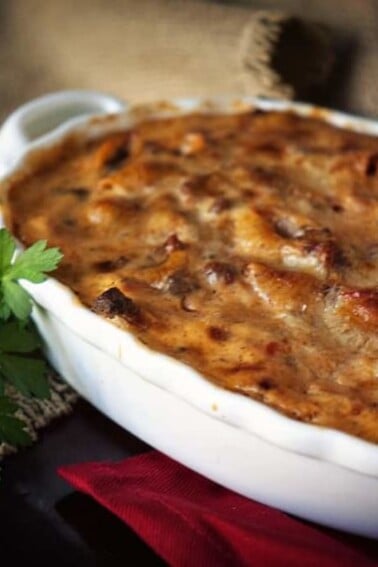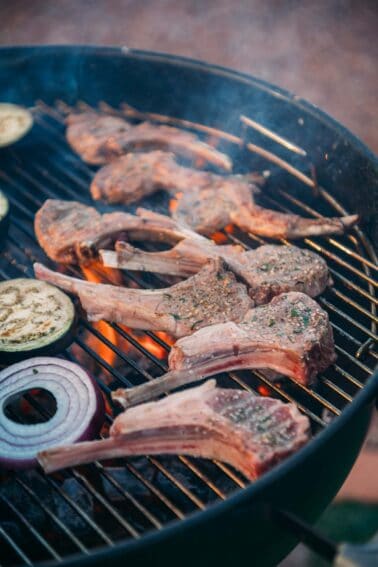Lamb Recipes
Most popular lamb recipes
Lamb Recipes
Smoked Lamb Barbacoa
Lamb Recipes
Moroccan Braised Lamb Shanks
Lamb Recipes
Perfect Grilled Rack of Lamb
About Lamb
Lamb may not be as popular in the United States as it is around the world, but it’s begging to be on the dinner plate. Travel outside of the States, and you will see a lot of countries eating a fair share of it (and mutton). Many global dishes use various cuts of savory stews and braises. From fork-tender meat-filled tagines with fruit and olives in Morocco to savory, rich vindaloos in India.
Australia has its lamb barbecue game on point, and its production is rising rapidly (notice the label when you are sourcing your meat). And even in some places throughout the US, it’s starting to make a comeback on regular menus.
What’s the difference between Lamb and Mutton?
Lamb is a sheep under 12 months of age at slaughter. It can be cooked in a variety of ways, from ground lamb ragus to slow-smoked leg of lamb barbacoa (and, of course, crazy good chops). The flavor is mild and earthy.
More and more, cuts of lamb are finding a spot at the butcher counter from racks of lamb to ground lamb, and not just at the holidays. It’s a versatile protein, and the variety of cuts can be braised, grilled, smoked, or seared.
If you’re not sure where to buy lamb, check out our guide to ordering meat online for our trusted sources and recommendations.
Mutton, which is often described as ‘gamey‘ and finds itself much less preferred, is a little older when slaughtered and was a staple of the food used for soldiers in World War II. That ‘gamey’ flavor people talk about is very present in mutton.
Mutton also requires different cooking methods to ensure that it is tender and has a wonderful flavor, not a chewy overpowering mouthfeel. But, when cooked properly, like all things, delectable.
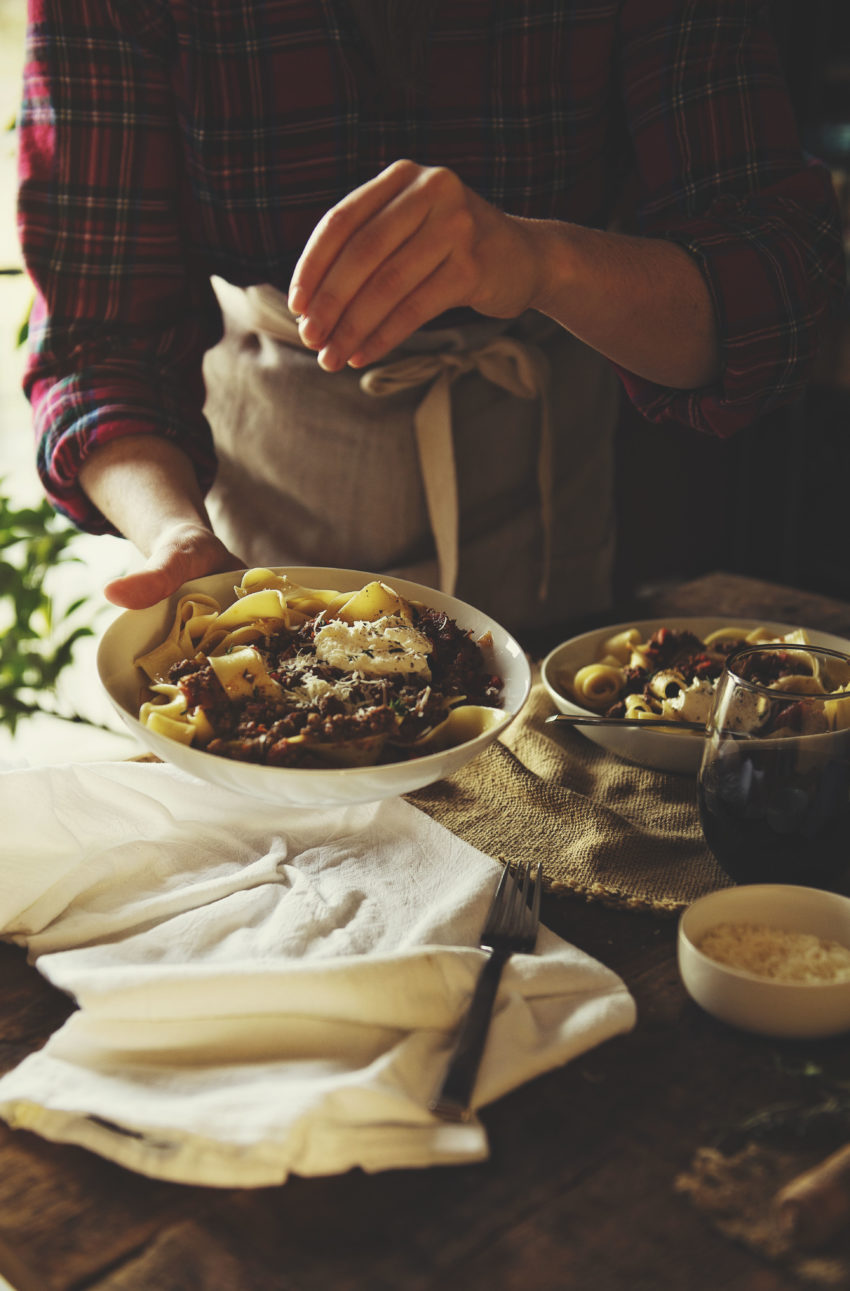
Ground LAMB
Lamb Temperature Guide
When it comes to delicious lamb, knowing exactly what temperature to cook it to is key. For some cuts, like rack of lamb, you may want to serve medium-rare, where shredded lamb, like barbacoa, is begging to be cooked past well done to help the fibers break down and the meat shreds apart from the bone.
| RARE 120 °F | MEDIUM RARE 125 °F | MEDIUM 135 °F |
| MEDIUM WELL 145 °F | WELL DONE 155 °F | GROUND 160 °F |
Take into consideration that the temperature will continue to rise from 5 °F to 10 °F while the meat rests.
Always use a quality instant-read digital thermometer inserted away from the bone in the thickest part of the meat.
BASIC TIPS FOR COOKING lamb:
Lamb has a unique flavor that pairs well with so many bright, herbaceous, and rich sauces, flavors and sides. It’s always best to learn the best internal temperature for the cut you are working with before you start so you can gauge the prep and cooking time. Season with salt as you go and enjoy the flavors.
For the best flavor and texture, always learn the best internal temperature for your favorite beef cuts before cooking and if a low and slow cooking method or hot and fast cooking method is best. Season with salt as you go to guarantee not overseasoning, and let the flavor of the meat shine through for a delicious meal.
What to serve with Lamb
Lamb, just like other red meat, pairs well with robust red wines, hearty greens, homemade condiments, like unctuous chimichurri rojo, fruits or compotes, and fresh herbs. We often pair lamb with smoked brussels sprouts or duck fat coated dominoes potatoes.
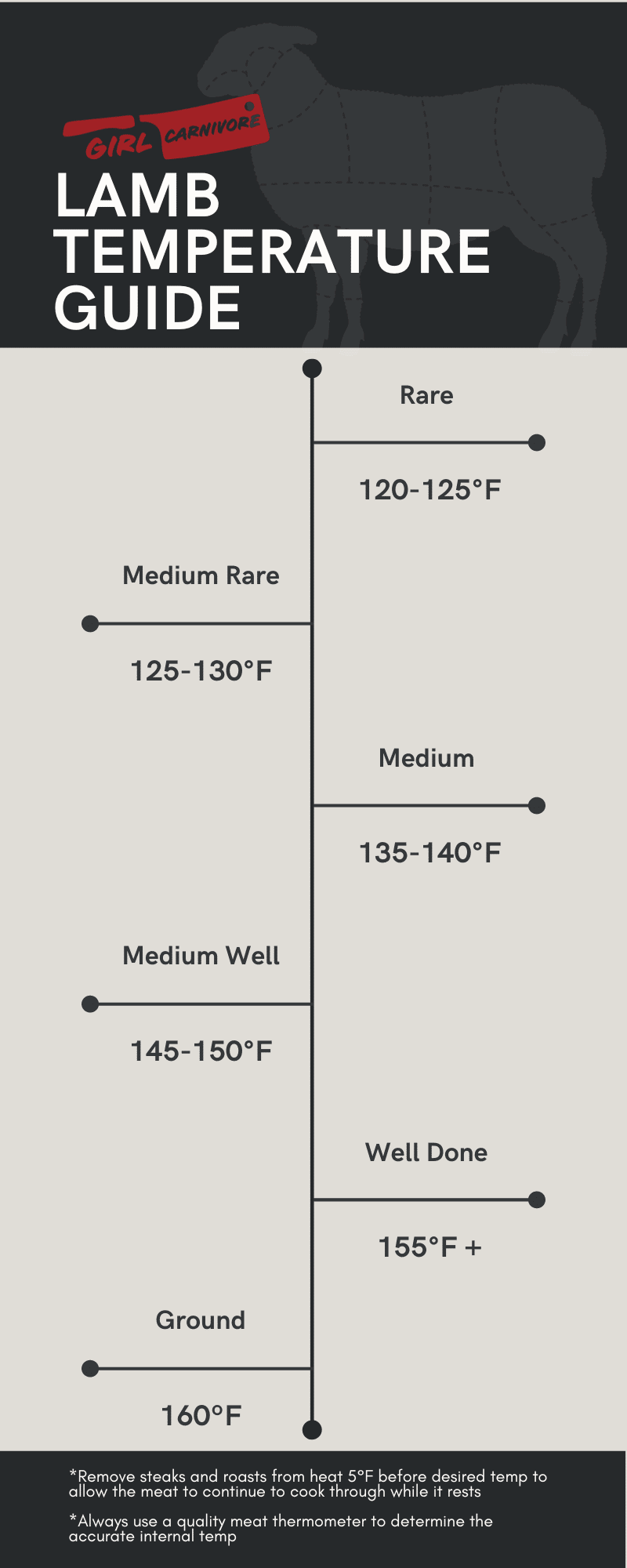
Newest Lamb Recipes
Lamb Recipes
Classic Shepherd’s Pie
Lamb Recipes
Dutch Oven Lamb Stew
Lamb Recipes
Grilled Lamb Loin Chops
Lamb Recipes
Grilled Lamb Kabobs with Harissa Marinade
Lamb Recipes
Garlic-Stuffed Boneless Leg of Lamb Recipe
Lamb Recipes
Grilled Lamb Crown Roast with Moroccan Spices
Lamb Recipes
Sous Vide Rack of Lamb
Lamb Recipes
Sous Vide Lamb Shanks
Lamb Recipes
Smoking Lamb Ribs
Lamb Recipes
Oven Roasted Lamb Ribs Recipe
Lamb Recipes
Grilled Lamb Ribs
Dinner Recipes
Smoked Leg of Lamb
Lamb Recipes
Baked Lamb Meatballs
Lamb Recipes
Savory Lamb Ragu with Pappardelle Pasta
Lamb Recipes
Slow Cooker Irish Lamb Stew
Lamb Recipes
Moroccan Braised Lamb Shanks
Lamb Recipes
Lamb Stuffed Peppers
Lamb Recipes
Campfire Moroccan Lamb Pizza
Lamb Recipes
Harissa Butter-Stuffed Lamb Burgers
Epic Burger Recipes
Caribbean-Jerk Lamb Burgers with Tostones
GC Original
Turmeric Ground Lamb and Eggs
Dinner Recipes
Cumin Spiced Lamb Meatballs with Chimichurri Drizzle
Lamb Recipes
Perfect Grilled Rack of Lamb
Lamb Recipes
Smoked Lamb Barbacoa
Lamb Recipes
Honey Dijon Leg of Lamb Recipe
Dinner Recipes
Roasted Red Pepper Hummus Lamb Burger
Dinner Recipes
Not Your Mama’s Pastitsio
Grilling Recipes
